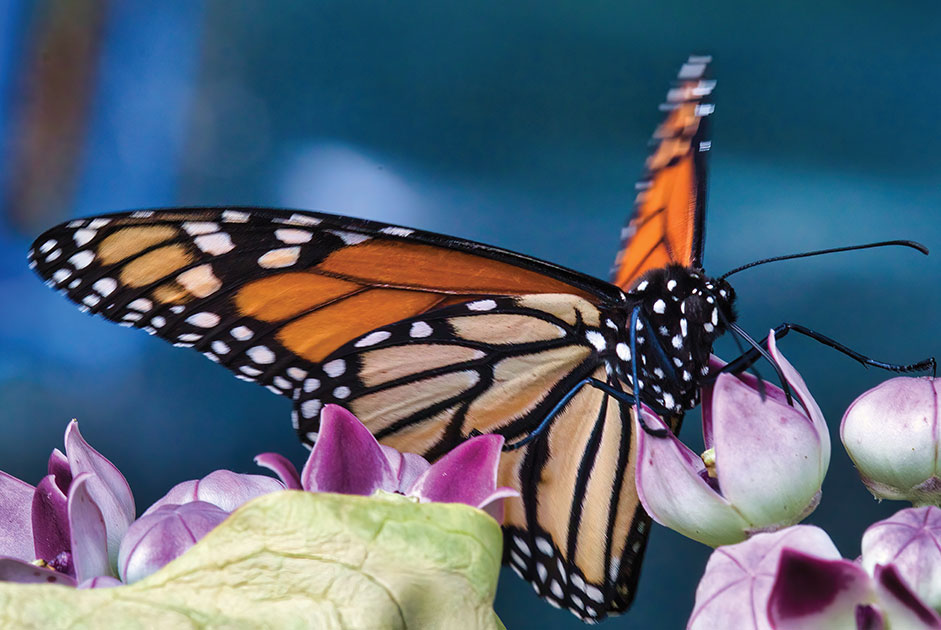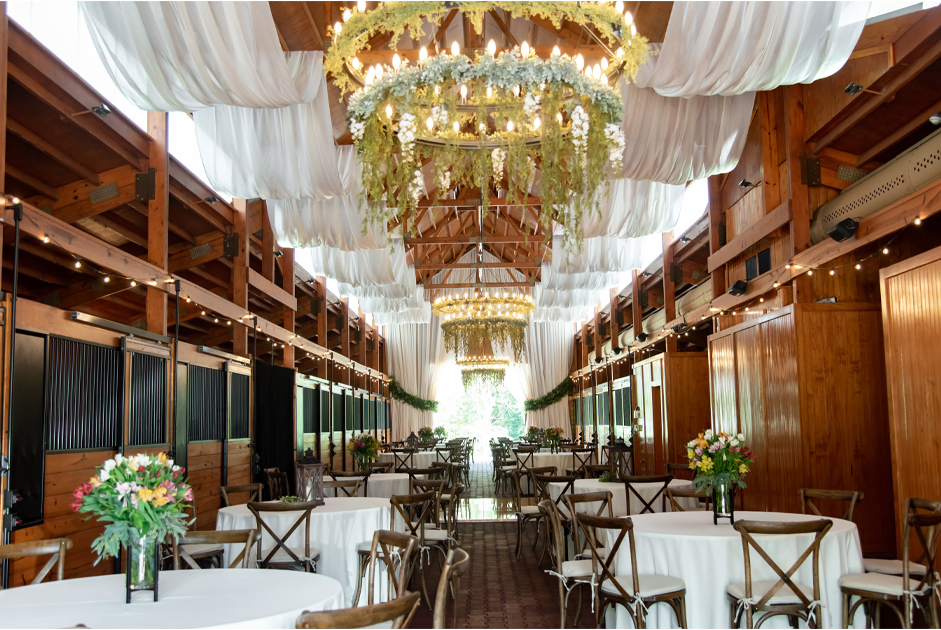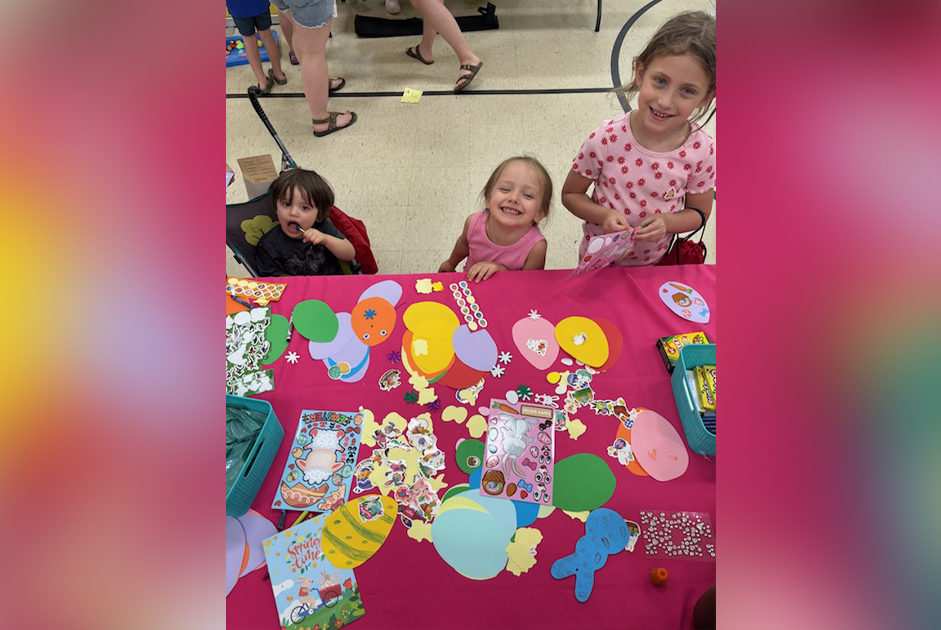BY KRISTY DODD
From the time I was a child growing up in Michigan, I have always had a love for butterflies. My father majored in entomology in college, and from an early age, he had my sister and me chasing butterflies with our butterfly nets. I became more fascinated with the butterflies, especially monarch butterflies when my family moved to Florida, and we had a plant called milkweed growing in our yard.
I noticed that the monarchs were laying eggs on my plants, which quickly hatched into tiny and very hungry little caterpillars! I learned that milkweed is what is called a host plant. It is the only plant the little caterpillars will eat. They are very picky eaters! The more I learned about these beautiful butterflies, the more I became addicted to their fascinating life cycle. Within about a month, the caterpillars go through a truly amazing metamorphosis, starting from a tiny egg the size of a period and culminating in the release from their chrysalis, a beautiful orange and black monarch butterfly!
Monarchs are one of the only butterflies that migrate to Mexico in the winter, where they are protected from the cold. They gather by the thousands on an estimated 12 mountain tops in Mexico, where they are protected by the branches of oyamel fir trees. When warmer weather comes, the monarchs begin their long journey into parts of the US. It takes about four generations for the butterflies to reach Florida and the Midwest states. Dining on nectar from plants along the way, the first generation goes a short distance, rests to lay eggs and the next generation that hatches from those eggs flies a little further until they arrive at their destinations. They often arrive in the same place where their great great great grandparents visited the year before! How they know where to fly is still a mystery!
After a few months when the weather again begins to cool, the next generation of monarchs to hatch are called Super Monarchs. These monarchs are larger and stronger, and this generation flies all the way back to Mexico to spend the winter, beginning the cycle again.
I hope by now you are beginning to be as fascinated by the monarchs as I have become! At the time there were many monarchs in our yard in Florida, but with further research, I soon learned that the monarchs were experiencing an 80%to 90% decline in their numbers from 1.2 million 20 years ago to an estimated 30,000 currently. The US Fish and Wildlife Service may soon decide if the butterflies should be officially designated “Endangered.” There are many reasons for their decline. Extreme weather due to climate change has allowed freezing weather in Mexico to freeze the butterflies as they huddle together in the fir trees. Large swaths of prairie in the US that support the milkweed the caterpillars need to survive have been wiped out by development and have been re-appropriated for farming. Over that time, we’ve lost over 150 million acres of monarch habitat. Patches of milkweed that used to grow in fields and roadsides are gone due to genetically modified crops that are sprayed with herbicides that allow crops to grow but kill the milkweed that the monarchs need. Also gone are the nectar-producing flowers the adult butterflies need to sustain them on their journey.
Now you might realize why I entitled this article “Let’s Bring Back the Monarchs!” These beautiful butterflies cannot depend on farmers and developers for their survival. They must rely on people that love plants and all they bring to our environment. Who better to help restore butterfly populations than gardeners like us! Milkweed is readily available in nurseries, so be sure to plant a patch of milkweed in your garden! Share the news about these beautiful butterflies with friends and neighbors so that they will survive to thrill generations to come!


















